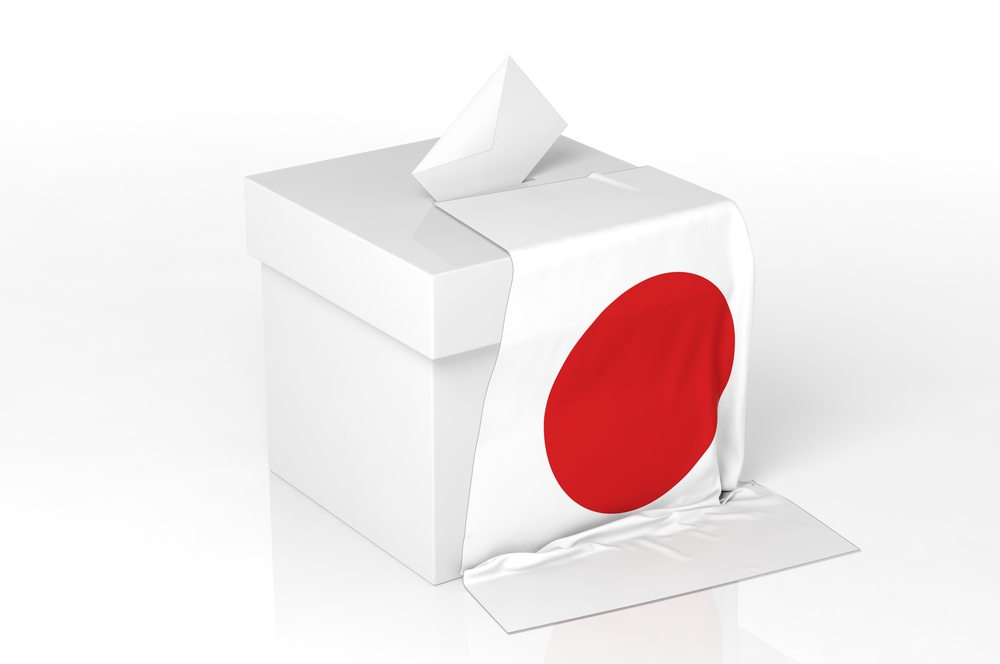Japanese Politics Hear from Students

Please note that we are not authorised to provide any investment advice. The content on this page is for information purposes only.
Recent student protests in Japan against the Liberal Democratic Party’s (LDP) proposed changes to constitutional reinterpretation have Japan watchers asking ‘is the sleepy Japanese student waking up?’ However, what if they were never asleep or they were just waiting for the alarm clock to go off?
Recent student protests in Japan against the Liberal Democratic Party’s (LDP) proposed changes to constitutional reinterpretation have Japan watchers asking ‘is the sleepy Japanese student waking up?’ However, what if they were never asleep or they were just waiting for the alarm clock to go off?
Prime Minister Shinzo Abe’s highly controversial reforms would allow a greater security role for Japan’s Self Defense Forces. Criticism of Abe’s efforts has been widespread and reinvigorated by the 70th anniversary of the end of World War II on 15 August 2015. The protesting students want to maintain the status quo and they are demonstrating on a platform of peace. In doing so, they are defying the stereotype that Japan’s youth are disinterested in politics.
The voting rate among those in their 20s is below 30 percent, but over 50 percent of young people in Japan claim an interest in politics, according to the Japanese Cabinet Office. Yet only 30.2 percent of respondents to the same survey answered that their involvement or contribution to politics would matter. Remember that the LDP has held majority power in the Diet for many years, despite Japan’s economic malaise and challenges.
In the December 2014 election, the overall voting rate stood at 52 percent, the lowest in postwar history. National partisanship may contribute to low voting rates, even among older generations, as the results are clear before the close of any election. Some youth-led organisations suggest that internet voting may increase voting rates, particularly among younger generations.
Younger generations also express their opinions in non-traditional forms such as blog posts and social media. Japanese tapas bars (izakaya), for example, incentivise engagement through articles on their websites and tweets. The Teen’s Rights Movement and Youth Create use YouTube and Twitter to express their opinions and test younger generations’ attitudes towards politics. The Teen’s Rights Movement began with a mission in January 2013 to lower the voting age to 18 from 20 and engage youth participation in political discussion. Approximately 15,000 high school students engaged in political discussions through the Teen’s Rights Summit.
Nevertheless, the attitude of traditional educators towards political education is more complex. Civic education, including the political content of high school curricula, has become increasingly controversial because of political proposals to reduce the voting age.
Traditionally, teachers have been required to present an apolitical persona, particularly in light of the draconian war propaganda practised in schools before World War II. In March 2015, a teacher from Osaka was reprimanded and dismissed for not standing up to sing the national anthem at a graduation ceremony. He remained seated because of his concern about the anthem’s association with the war: he wanted to educate students about its history so that they will never make the same mistakes of the war period.
The Japan Teachers’ Union argues that civic education should not stop at conducting mock voting or learning about the rules relating to the election system. It should also include an element of social responsibility for citizens to use their voting rights in a way, which fosters active involvement in societal issues.
These young advocates and older educators will have their chance to participate soon. In June 2015, Japan’s National Diet passed an amendment to decrease the voting age from 20 to 18, bringing Japan into line with the voting age of most countries.
The Japanese government’s motivations for the reform are unclear, although the stated rationale is to increase interest in politics among the younger population. The amendment will increase the number of voters by almost 2.5 million people at the 2016 elections. The reforms are top-down and, for the politicians, it may be a case of ‘be careful what you wish for’. Until now, the voting rate has been highest among the 60s age bracket — almost 70 percent — which undoubtedly influences parties’ policies.
Yet, voting may be overtaken by other approaches — and not just for younger people. This decade seems to have seen an increase in popular demonstrations in Japan, beginning in 2011 with protests against restarting Japan’s nuclear power plants. However, student voices seemed absent until now. The current protests in relation to the proposed constitutional reforms coalesce with the Japanese government’s decision to reduce the voting age from 20 to 18, but they are not necessarily linked.
The potential drivers for student involvement in the protests are numerous. Some are more Japan-specific (Abe’s controversial reform agenda or Japan’s less stable economic and global position). Others are arguably common with student movements globally (a lack of life and economic opportunities for young people). There is also the impact of recent student protests elsewhere, including Hong Kong, Malaysia and Taiwan. How different generations interact on the protest agendas also remains to be seen.
The drop in the voting age does not necessarily mean that students will turn out in greater numbers to vote in 2016. There may be no candidates that they consider worthy and there is no guarantee that younger people will vote as a collective. However, it may be the beginning of something new — if not revolutionary — in Japan. Younger people may yet start to influence the sort of Japan to which we are all waking.
Japanese students wake up to politics is republished with permission from East Asia Forum




